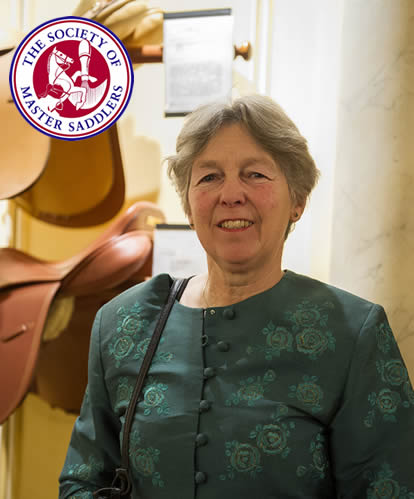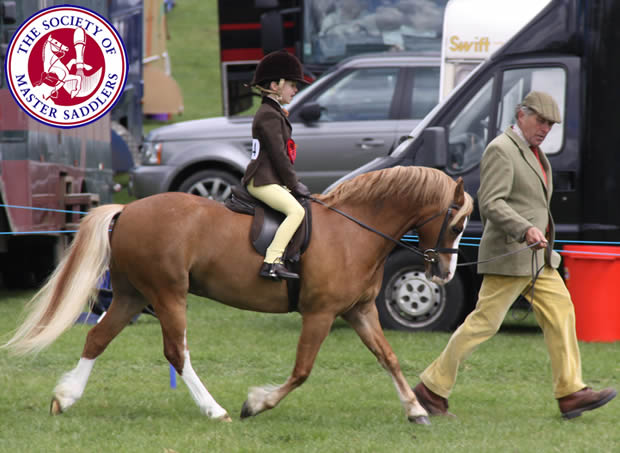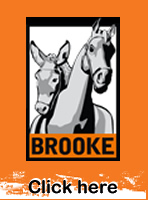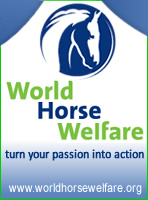
Horseytalk.net Special Interview
Kay Hastilow
 How to fit a pony saddle
How to fit a pony saddle
On behalf of the Society of Master Saddlers, Master Saddler and Qualified Saddle Fitter, Kay Hastilow, explains how
1. What issues do you see arising most frequently when it comes to fitting ponies with saddles?
There are two main issues with fitting saddles to ponies. The first is preventing the saddle sliding up the pony's neck which will lead to the back of the saddle bouncing and the pony being unhappy. The second is that sometimes the riders are tall or generally large for the pony so getting a saddle that is large enough with big enough flaps without swamping the pony can be challenging.
2. How important is it to make the child secure and comfortable as they begin their riding journey, but in a saddle that is suitable for the horse.
The saddle must be comfortable and make a young rider feel secure to help build confidence, but it is equally important that the pony is comfortable as at time when they are not, they might allow their opinion of the matter to be known, and this will certainly not make the rider confident or secure!
3. Is a deeper seat, or a more open seat, better when it comes to improving the position of the rider?
With regard to deeper or more open seat being the best for improving the position of the rider - it depends. If the rider is quite broad, a wider flatter seat will be more comfortable and allow the rider to sit better, whilst if the rider is slim the deeper, narrower seat might be best. However, it is essential that the tree of the saddle is suitable for the pony. If it is a narrow backed thoroughbred type, too broad a seat will not be supported and may move. It will not distribute the rider's weight as you would wish. Likewise, too narrow a seat on a broad backed pony may not sit securely in to the back, so allowing the saddle to tip and rock, whilst the rider may feel perched above the pony.
4. Is a saddle with a wider gullet better for ponies (which tend to be rounder, and flatter-backed with less well-defined shoulders and withers), or will the back of the saddle rise off the horse's back and push the rider's weight over the points and stirrup bars?
It is imperative that the front width fitting, as well as the shape of the tree in general is correct for the pony. Too wide and the saddle will tip forward, causing considerable pressure and discomfort in the area behind the pony's shoulders. The back of the saddle will lift and bounce, also causing discomfort. Too narrow a tree can tip the saddle back, causing pressure under the back of the saddle. Also, the saddle may well 'run forward' on to the neck. Part of the tree called the side rails (the bit that narrows under your leg before broadening out into the seat) must also be of a suitable angle and have a suitable width between them. Too close together and angled and the saddle will rock, too far apart and the saddle might come on to the spine.
The centre gullet should correspond in width to the breadth of the spinous processes and to the tree of the saddle. If it is a tree with separate side rails, the panel must cover most of the side rail or the tree will push past the panel and down on to the back.

5. Is a saddle with a wider gullet better for ponies (which tend to be rounder, and flatter-backed with less well-defined shoulders and withers), or will the back of the saddle rise off the horse's back and push the rider's weight over the points and stirrup bars?
If the saddle has a flocked panel, a good saddler can 'fine tune' the fit so that the saddle is in perfect balance (always assuming that the tree is of the correct size and shape). The flocking should be of a good quality wool and be quite soft. Not hard or lumpy. In my opinion it is not possible to achieve such a good fit with a foam or felt and foam panel as your only method of adjusting the fit is by the addition of shims, which is not always wonderfully successful.
6. How can one avoid choosing a saddle that slips side to side/rides up the neck and causes problem with bridging? Does it come down to the position of the girth points?
The best way of avoiding a saddle that rolls to one side, rides up the neck or bridges is to use, whenever possible, the services of a Society of Master Saddlers Qualified Saddle Fitter. They will know, by assessing the pony and rider, the style, shape and size that will do the trick. Some saddles now come with several positions of girth straps and this can help the saddle fitter to overcome any conformation difficulties that may cause these actions. However it is the ability to look at a pony and see what these difficulties are and to know what is available saddle wise that is the key to successful fitting.
7. Is the size of the knee roll important?
The size of the knee roll is really a personal choice. Some like a big, supporting knee roll. Some a smaller knee roll set higher. Some prefer to have no knee roll at all.
8. How does one get around the difficulty of finding a saddle that fits the rider (e.g. adult pony riders that may have a larger bottom!) but still fits the pony's back whilst allowing for the length of leg (i.e. has flaps that are suitable for either a long legged or short legged child (or adult))?
Here in the UK we are very lucky in that saddle makers will make what we ask them for. We can get a tree from them and try this on the pony then build a saddle to suit both rider and pony. Failing that, there are now several 'teenagers' style saddles available in 16in and 16.5in - these tend to have a slightly broader seat and longer flap length, which will also suit the small adult.
9. Can we get away with a less than perfect fit on ponies that are ridden at the weekend, compared to those competing at the upper levels that are ridden for many more hours per week?
Of course, damage to a pony's back from an ill-fitting saddle is cumulative, so that if you only ride the pony at weekends the damage may not be so obvious, but really, are we prepared to cause our animals discomfort just because it might cost more to buy a properly fitting saddle? Where does convenience and economy end and cruelty begin, I wonder?
Information about the Society of Master Saddlers can be found on the website:
www.mastersaddlers.co.uk or telephone 01449 711642.



